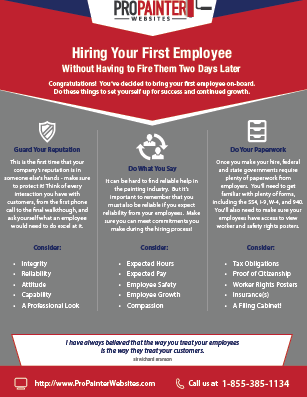The Impact Of Climate Condition On Business Outside Painting: Trick Factors To Consider
The Impact Of Climate Condition On Business Outside Painting: Trick Factors To Consider
Blog Article
Personnel Author-Cash Monaghan
When you're preparing an industrial external paint job, do not ignore the effect of weather on your results. You require to consider aspects like temperature level, humidity, and precipitation, as they can make or damage your paint task. For instance, did you recognize that suitable conditions call for certain temperature ranges and humidity degrees? Stopping working to keep an eye on these facets can bring about irregular coatings or even damages to fresh paint. Recognizing these components is key to achieving a resilient, professional outcome. So, what specific weather conditions should you be wary of?
Temperature level Considerations
When it pertains to commercial external painting, temperature plays a critical duty in the result of your project. If you're painting in extreme heat, the paint can dry as well quickly, resulting in problems like poor bond and uneven surfaces. You intend to aim for temperature levels between 50 ° F and 85 ° F for the very best outcomes. Listed below 50 ° F, paint might not treat appropriately, while above 85 ° F, you run the risk of blistering and fracturing.
Timing your task with the appropriate temperature levels is necessary. Start your work early in the morning or later in the mid-day when it's cooler, especially during hot months.
Likewise, think about the surface area temperature; it can be substantially more than the air temperature, especially on bright days. Utilize a surface area thermometer to examine this prior to you start.
If temperatures are unforeseeable, keep an eye on the weather report. Abrupt temperature level declines or warm front can hinder your plans. You don't want to start repainting just to have the conditions alter mid-project.
Moisture Degrees
Moisture degrees dramatically influence the success of your business external paint task. When https://dallasmtzfn.blogdemls.com/33093473/leading-trends-in-residential-painting-providers-for-2025 is too expensive, it can prevent paint drying out and treating, causing a series of problems like inadequate bond and end up top quality.
If you're preparing a work during wet conditions, you could find that the paint takes longer to dry, which can extend your project timeline and rise expenses.
On the other hand, low moisture can also posture challenges. Paint may dry too promptly, avoiding correct application and causing an uneven surface.
You'll want to keep an eye on the moisture degrees very closely to ensure you're working within the excellent range, commonly between 40% and 70%.
To get the most effective outcomes, think about making use of a hygrometer to measure moisture prior to starting your job.
If you discover the levels are outside the ideal variety, you might need to readjust your schedule or choose paints created for variable conditions.
Constantly get in touch with the manufacturer's standards for particular suggestions on moisture resistance.
Rainfall Influence
Rain or snow can considerably disrupt your industrial outside painting strategies. When precipitation takes place, it can get rid of newly used paint or create an irregular surface. Preferably, you want to select days with completely dry climate to make certain the paint adheres properly and treatments successfully. If you're captured in a rain shower, it's best to stop the job and wait for conditions to enhance.
In addition, snow can be much more damaging. painters in tulsa does it produce a wet surface, however it can also reduce temperatures, making it tough for paint to completely dry. This can cause issues like peeling or blistering down the line.
It's important to examine the weather report before starting your task. If rain or snow is predicted, consider rescheduling.
Always keep in mind to permit appropriate drying out time in between layers, especially if the weather remains unpredictable.
Final thought
To conclude, keeping an eye on the climate is crucial for an effective industrial external paint project. By checking temperature level, moisture, and rainfall, you can make sure the very best conditions for application and treating. Keep in mind to intend your job around favorable climate and always adhere to manufacturer standards. With the right method, you'll achieve a long-lasting, gorgeous finish that can hold up against the aspects. Don't let the weather capture you off guard-- remain informed and repaint wise!
